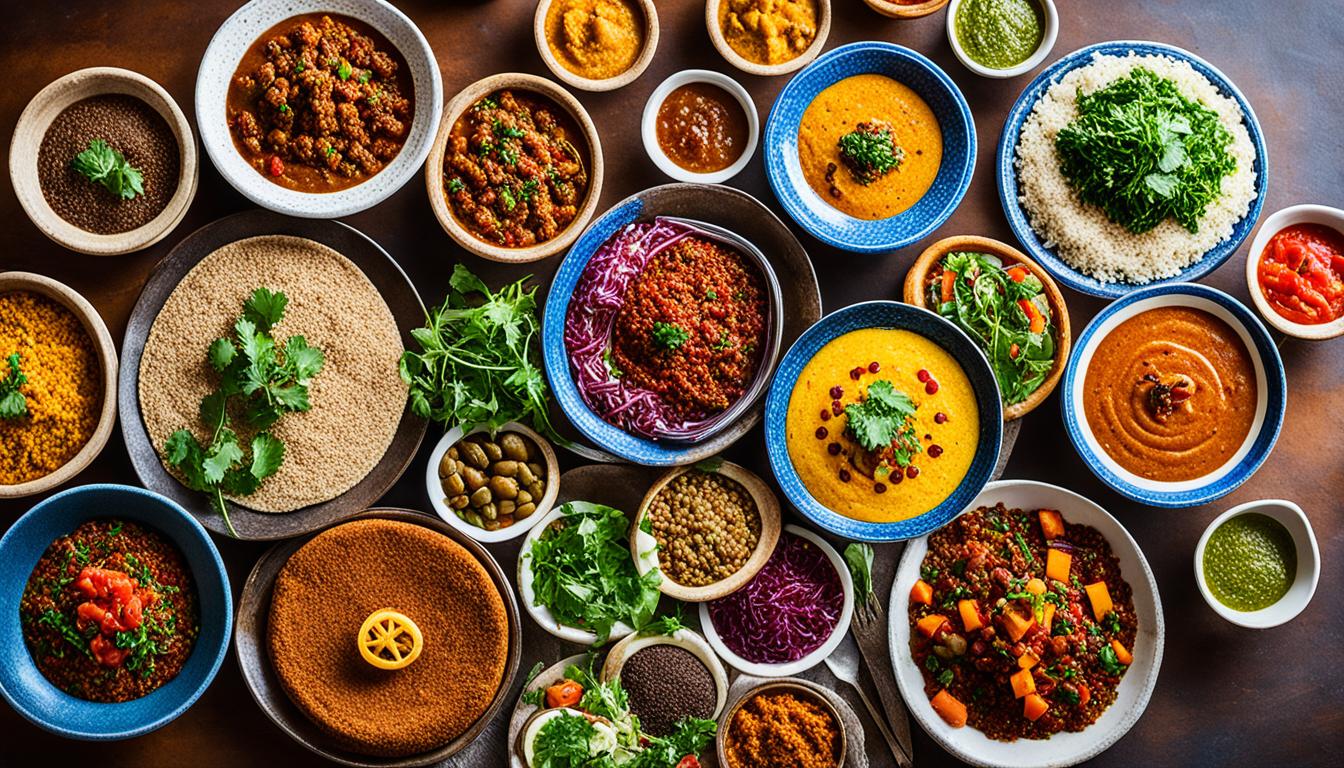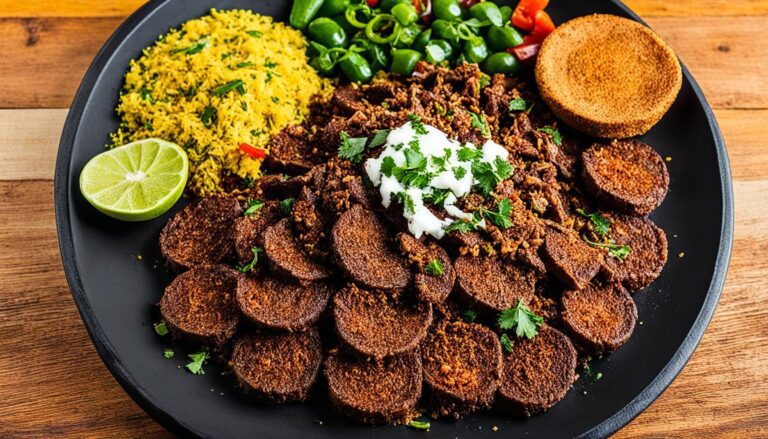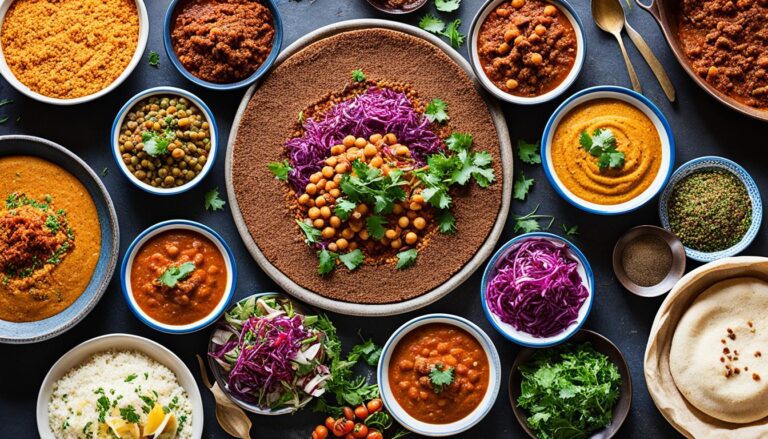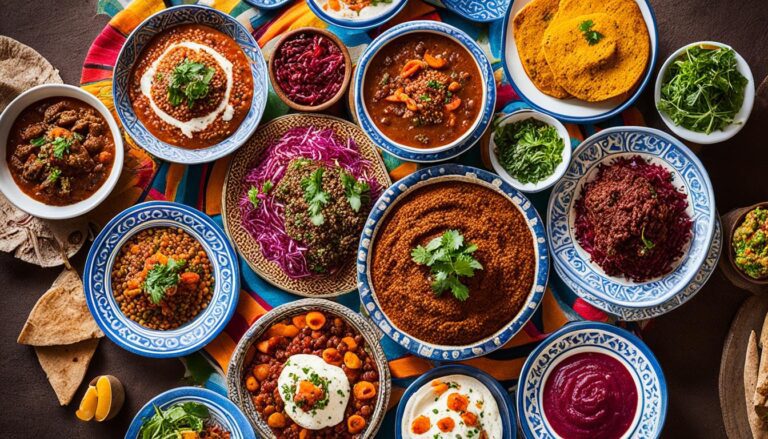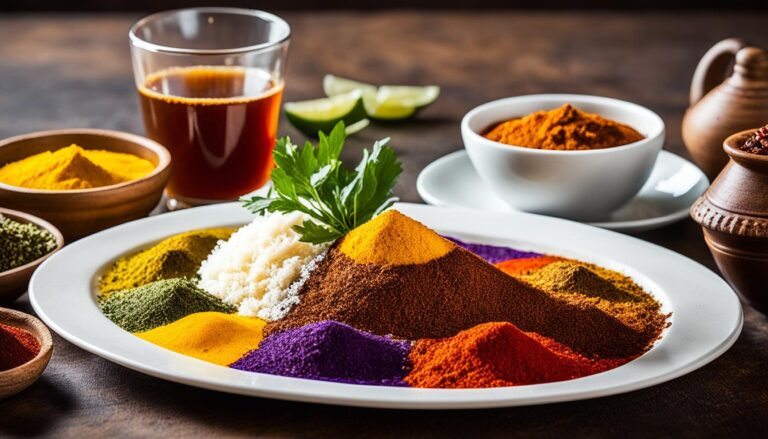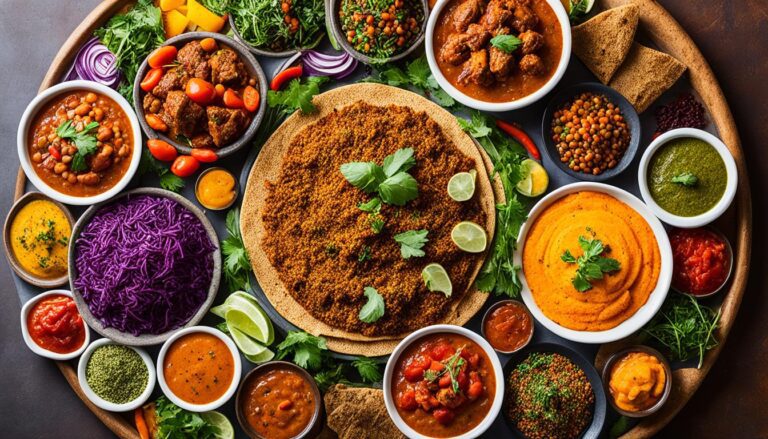What Ethiopian Food Is Gluten Free?
Are you a fan of Ethiopian cuisine? If you follow a gluten-free diet, you might be wondering if there are any options for you to enjoy this flavorful and diverse food. Well, you’re in luck! Ethiopian food offers a variety of gluten-free dishes that will tantalize your taste buds without compromising your dietary needs. So, what Ethiopian dishes can you indulge in without worrying about gluten? Let’s explore!
Key Takeaways
- Ethiopian cuisine incorporates a wide range of naturally gluten-free ingredients, such as teff, legumes, and vegetables.
- Injera, the sourdough flatbread made from teff, is a staple in Ethiopian cooking and can be enjoyed gluten-free.
- Traditional Ethiopian dishes like wat, a spicy stew, and fir-fir, a breakfast dish, are often gluten-free.
- There are gluten-free Ethiopian restaurants available in various locations, offering safe dining options for those with gluten intolerances.
- If you’re feeling adventurous, you can try making gluten-free Ethiopian dishes, including injera, at home.
Components of Ethiopian Cuisine
Ethiopian cuisine is a treasure trove of gluten-free dishes that celebrate the rich flavors of whole foods. The diverse ingredients used in Ethiopian cooking create a tapestry of taste, while also catering to individuals following a gluten-free diet.
Grains: Ethiopian dishes feature a variety of gluten-free grains that serve as the foundation of many flavorful creations. Teff, a tiny grain native to Ethiopia, takes center stage in the form of injera, a sourdough flatbread that pairs perfectly with stews and dishes. Millet and sorghum, two other gluten-free grains, are also commonly used in Ethiopian cooking.
Legumes: Lentils and chickpeas are staples in Ethiopian cuisine, providing a rich source of protein and fiber. These legumes add depth and heartiness to traditional Ethiopian stews and side dishes, making them an essential component of a gluten-free Ethiopian meal.
Vegetables: Ethiopian cuisine embraces the vibrant flavors of various vegetables, elevating the dining experience. Onion, carrot, tomato, cabbage, and collard greens are just a few examples of the colorful vegetables that are prominently featured in Ethiopian dishes. Whether they are used in stews or served as a side dish, vegetables bring freshness and nutrients to the table.
The use of gluten-free grains, nutritious legumes, and an abundance of vegetables in Ethiopian cuisine not only caters to those with dietary restrictions but also ensures a wholesome and satisfying dining experience. Discover the delicious and gluten-free world of Ethiopian cuisine, where every bite is a delightful celebration of flavor and tradition.
Ethiopian Dining Culture
Ethiopian dining culture is a unique and immersive experience that offers a glimpse into the rich traditions and customs of the country. One of the distinctive aspects of Ethiopian dining is the practice of eating with your hands, which adds to the sensory delight of the meal. When you sit down for an Ethiopian feast, you’ll notice that the food is served on a communal serving plate or tray, usually made of woven grass or wood. This communal arrangement encourages a sense of togetherness as everyone gathers around the platter, ready to share a meal.
Instead of using conventional silverware, Ethiopians rely on a versatile and integral part of their cuisine called injera. Injera is a sourdough flatbread made from the gluten-free grain teff. It has a spongy texture and a slightly tangy taste that complements the bold flavors of Ethiopian dishes. Injera serves a dual purpose during the meal: it acts as both a utensil and a plate. Tear off a piece of injera and use it to scoop up the different dishes and flavors on the communal plate. The soft texture of the injera allows you to grasp the various ingredients and savor them in one bite.
Eating with your hands is not only a practical way to enjoy the cuisine, but it also symbolizes a close connection with the food and the communal spirit of Ethiopian dining. It allows you to engage all your senses, from the tactile experience of tearing the injera to the taste of different flavors coming together in harmony. Additionally, this unique style of dining fosters a sense of togetherness, as diners pass the communal plate and interact with one another.
During an Ethiopian meal, you may also have the opportunity to experience a traditional custom known as gursha. Gursha is a gesture of honor and respect where a piece of food is hand-fed to someone else. It is a way of showing care and affection, creating a warm and welcoming atmosphere that is deeply rooted in Ethiopian hospitality. This gesture further reinforces the communal aspect of the dining experience and adds an extra layer of connection between diners.
Traditional Ethiopian Dishes
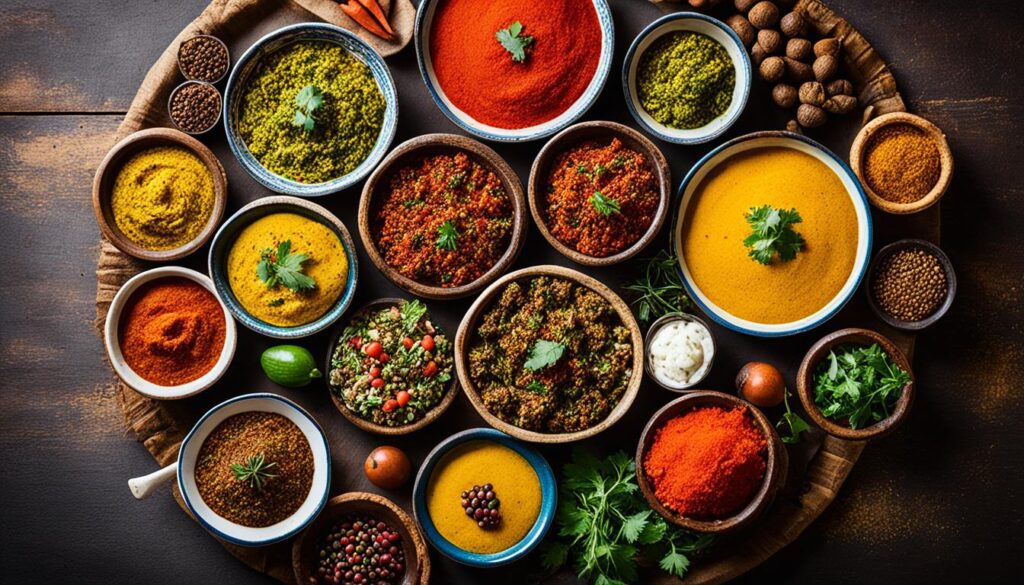
Ethiopian cuisine offers a delightful variety of traditional dishes that cater to individuals on a gluten-free diet. One iconic dish that is a must-try is injera, a sourdough flatbread made with teff. This unique bread not only serves as a delicious accompaniment to Ethiopian stews and dishes, but it also acts as a utensil, allowing you to scoop up the flavorful combinations of flavors. To add a burst of bold and aromatic flavors to your meal, berbere, an essential spice blend in Ethiopian cooking, is the perfect addition. It adds a unique complexity that elevates the taste of the dishes.
One staple dish in Ethiopian cuisine is wat, a spicy stew made with vegetables and/or meat. There are various types of wat, such as vegetarian lentil wat or chicken wat, each offering a rich and distinct experience. Whether you prefer a vegetarian or meat-based option, the combination of aromatic spices and tender ingredients make wat a truly satisfying dish.
For a delightful breakfast option, try fir-fir. This mouthwatering dish is created using leftover injera and is typically mixed with spices, onions, and seasoned butter. It’s a fantastic way to start your day with the vibrant flavors of Ethiopian cuisine.
To truly experience the rich and diverse flavors of Ethiopian cuisine, these traditional dishes are a must-try. Whether you’re dining at an Ethiopian restaurant or preparing a homemade Ethiopian feast, these dishes will surely transport your taste buds to the vibrant culinary world of Ethiopia.
Making Ethiopian Food
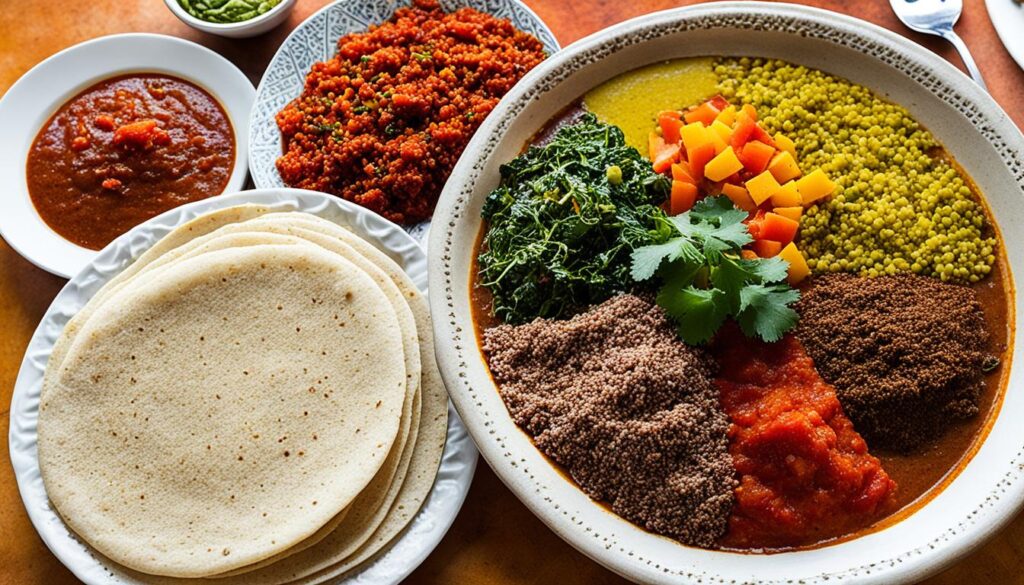
If you’re feeling adventurous, you can try making Ethiopian food at home. One popular dish to try is injera, the sourdough flatbread that is a cornerstone of Ethiopian cuisine. There are gluten-free injera recipes available that use solely teff flour and other gluten-free ingredients. Fermenting the batter for 24-72 hours is crucial to achieve the characteristic flavor and texture of injera. By following a gluten-free injera recipe, you can enjoy the authentic taste of Ethiopian cuisine in the comfort of your own home.
Whether you’re a seasoned home cook or a beginner in the kitchen, making Ethiopian food can be a fun and rewarding experience. Experiment with various spices and flavors to recreate the vibrant and aromatic dishes of Ethiopia. In addition to injera, try making traditional Ethiopian stews like doro wat (spicy chicken stew) or misir wat (spicy lentil stew). These dishes showcase the rich flavors and textures that Ethiopian cuisine is known for.
When preparing Ethiopian food, don’t forget to create a warm and inviting atmosphere by using traditional Ethiopian platters and utensils. Sharing a meal with family and friends is an integral part of Ethiopian culture, so gather your loved ones and enjoy the vibrant flavors of Ethiopian cuisine together.
Exploring Ethiopian Cuisine Beyond Injera
While injera is undoubtedly a staple in Ethiopian cuisine, there are other gluten-free dishes that you can explore. Shiro, a flavorful chickpea stew, is another popular dish that can be enjoyed with injera or rice. Tibs, a dish featuring marinated meat or vegetables stir-fried with spices, is another delicious gluten-free option. And don’t forget to try the Ethiopian coffee ceremony, which involves roasting and brewing fresh coffee beans to create a rich and aromatic cup of coffee.
With a wide variety of gluten-free recipes and dishes to choose from, Ethiopian cuisine offers something for everyone. So why not embark on a culinary adventure and bring the flavors of Ethiopia into your own kitchen? Explore the rich and diverse world of Ethiopian cooking and discover new flavors and tastes that will transport you to the heart of Africa.
Gluten-Free Ethiopian Restaurants
If you prefer to dine out, there are gluten-free Ethiopian restaurants available in various locations. These restaurants understand the needs of individuals with dietary restrictions and offer gluten-free options on their menus. It is important to note that while these establishments cater to gluten-free diets, they are not dedicated gluten-free facilities, so cross-contamination may still be a possibility. It is always recommended to call ahead and communicate your dietary needs to ensure the best possible dining experience.
Conclusion
Ethiopian cuisine offers a diverse and delicious array of gluten-free options, making it a safe and satisfying choice for individuals with gluten intolerances or Celiac disease. Whether dining out or cooking at home, the use of whole foods, vegetables, legumes, and gluten-free grains like teff ensures that you can enjoy flavorful and nourishing meals without worrying about gluten.
With the traditional Ethiopian diet consisting of naturally gluten-free ingredients, such as injera made from teff, lentils, and various spices, there are plenty of choices to explore. From spicy stews like wat to the unique experience of communal dining using injera as both utensil and plate, gluten-free Ethiopian food offers a truly immersive and satisfying dining experience.
Whether you’re seeking out gluten-free Ethiopian restaurants or experimenting with homemade injera and other traditional dishes, you can indulge in the rich flavors and aromas of Ethiopian cuisine. By embracing this culinary tradition, you can enjoy diverse options, safe dining, and a taste of Ethiopia right at your table.

